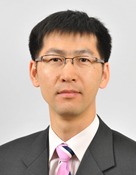Program Information
A New Method of Aligning Patient Setup Lasers in Radiation Therapy
U Hwang1*, Y Lim2 , S Choi3 , J Kwak4 , k Yoon4 , K Cho2 , C Jeong2 , M Kim2 , J Jeong2 , J Park2 , D SHIN2 , S Lee2 , J Kim2 , S Park5 , S Kim6 , (1) National Medical Center in Korea, Seoul, South Korea, (2) National Cancer Center in Korea, Goyang, Gyeonggi-do, (3) Korea Cancer Center Hospital, Seoul, Seoul, (4) ASAN medical center, Songpa-gu, Seoul, (5) McLaren-Flint, Flint, MI, (6) Virginia Commonwealth University, Richmond, Virginia
Presentations
SU-E-T-484 Sunday 3:00PM - 6:00PM Room: Exhibit HallPurpose: To develop a new method to align the patient setup lasers in radiation therapy and examine its validity and effectiveness.
Methods: The new laser alignment method was realized by a device composed of both a metallic base plate and few acrylic transparent plates with a cross hair line on each of them. The holders of radiochromic films were prepared in the device to find a radiation isocenter. The right laser positions could be found optically by matching the shadows of all the cross hairs in the gantry head and the device. The repeatability and reproducibility (R&R) of laser alignments and the dependency of the alignment on the position error of the light source were evaluated by comparing the standard deviations and the means of the measured laser positions. After aligning the lasers optically, a radiation isocenter was found by a collimator spoke shot and the gantry spoke shot, and then the lasers were parallely translated to the isocenter.
Results: In the R&R test, the standard deviation was 1.14 mm for the new method whereas it was 1.49 mm or 2.76 mm for the conventional method with either high- or low-precision levels. In the test of the dependency on the position error of the light source, the mean laser position was shifted by 5.3 mm corresponding to the shift of the light source, 4.8 mm for the new method, but for the conventional method the laser position was shifted more than 7 times than that. The positional shift could be corrected by a parallel translation to the isocenter in the new method.
Conclusion: A new laser alignment method was devised for radiation therapy and tested successfully. The method enabled us to align the lasers easily and accurately without repetition, and all lasers could be finally aligned to the radiation isocenter.
Contact Email:


